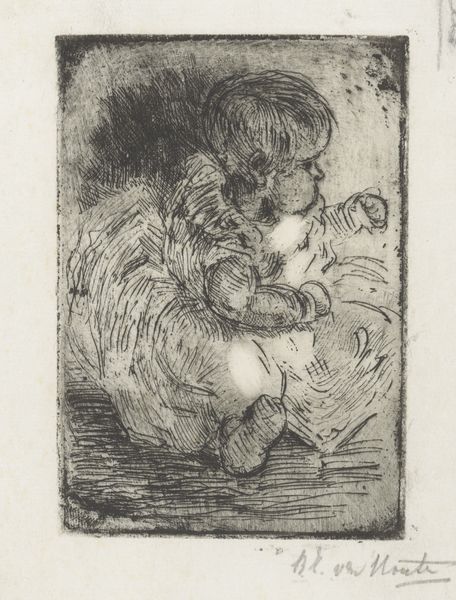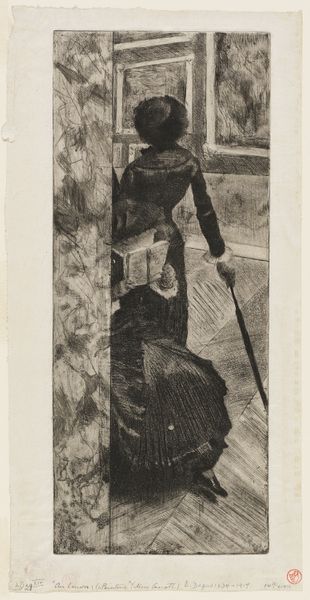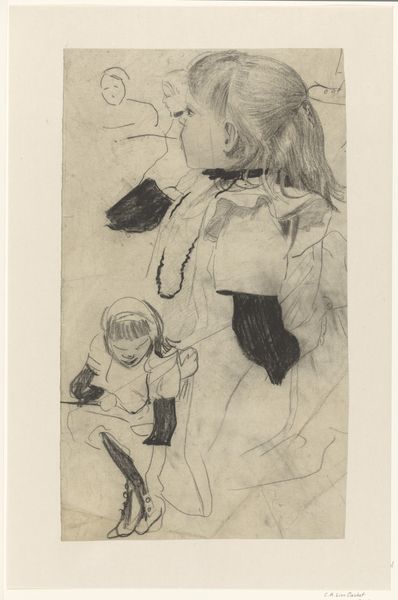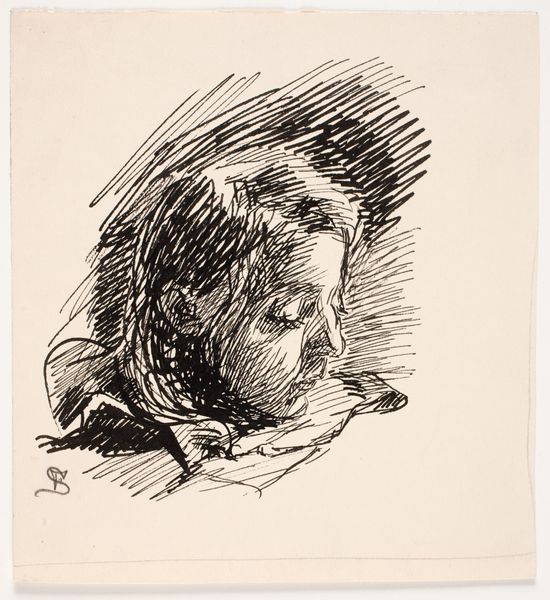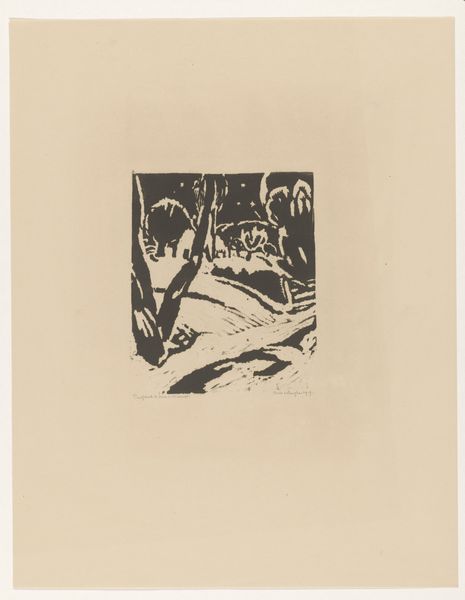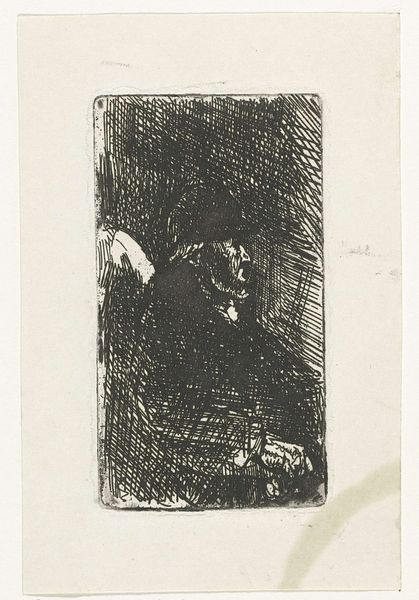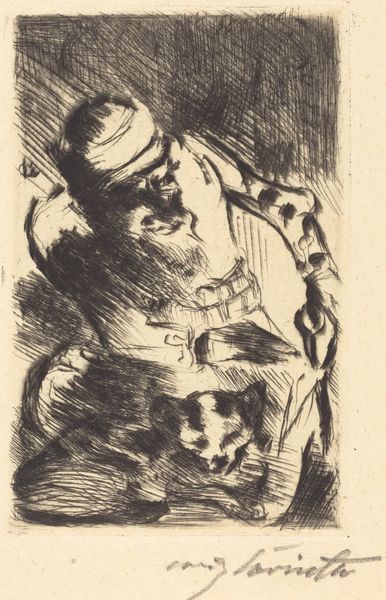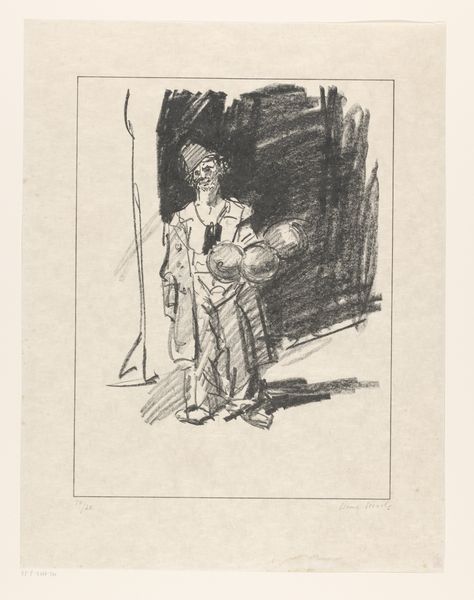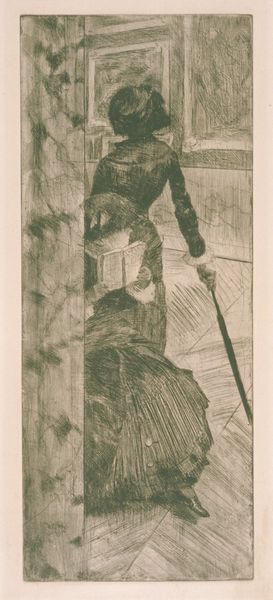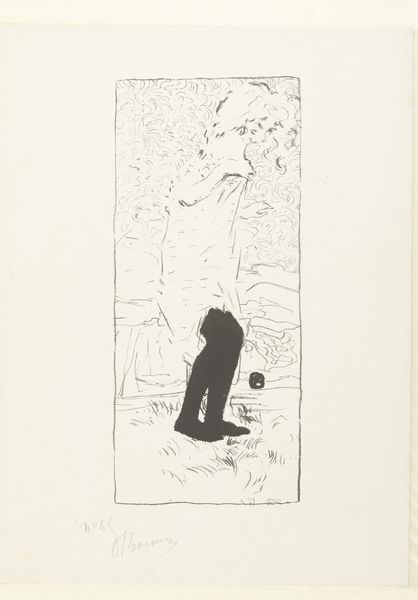
drawing, lithograph, print, paper, ink
#
portrait
#
drawing
#
narrative-art
#
lithograph
# print
#
impressionism
#
figuration
#
paper
#
ink
Dimensions: 355 × 235 mm (image, appro×.); 422 × 295 mm (sheet)
Copyright: Public Domain
Curator: This is "The Song of the Dog", a lithograph print by Edgar Degas, completed sometime between 1876 and 1877. Editor: Immediately, I’m struck by the heavy contrast, that stark chiaroscuro. It creates a very particular, almost claustrophobic atmosphere, doesn't it? Curator: The interplay of light and shadow is certainly pronounced. Observe how Degas employs hatching and cross-hatching to model the figure and the surrounding space. It's more than mere description; it shapes our perception. Editor: Absolutely. It almost feels like a stage set, with the figure spotlighted, yet isolated within the dense, dark background. What do we know about where it would have been exhibited and seen? Curator: This print, rendered in ink on paper, suggests the artist's deep engagement with printmaking as an art form and as a socially distributed art form in its own right. It challenges conventional notions of uniqueness, by playing with multiplication and the ready availability of images. Editor: I think, as well, this reproduction adds a layer to its socio-political reading: the cabaret singer depicted seems like someone trapped in a spectacle not of her own making. The dog of the title may speak to that. A reference to what she may really think in such circumstances. Curator: It could very well be the public perception of these working women within the framework of Parisian social spaces. The focus on her gestures and expression seems meant to provoke in us a similar gaze to the men in the audience. Editor: In many ways, this seemingly simple print encapsulates complex questions about performance, spectatorship, and the role of women in 19th-century society. Curator: Precisely. Degas allows us to appreciate the semiotic dimensions of this character, without flattening its narrative under any reading in particular. It still stands. Editor: A perfect case for a print's complex layers that can be read and re-read.
Comments
No comments
Be the first to comment and join the conversation on the ultimate creative platform.
